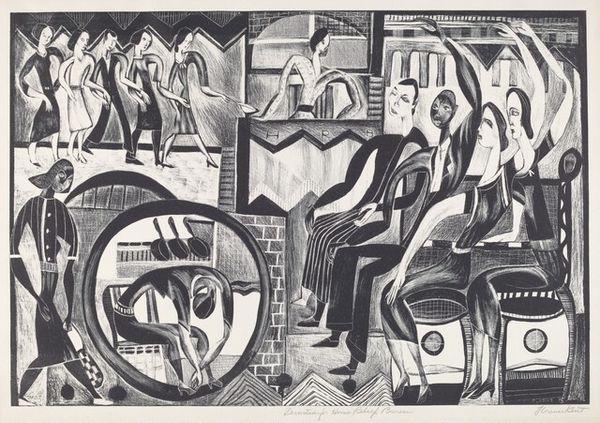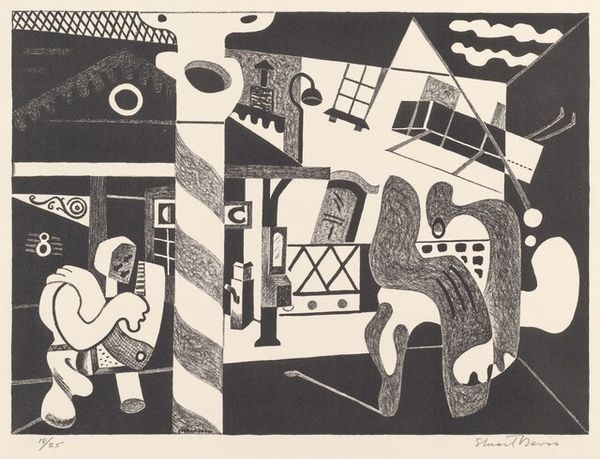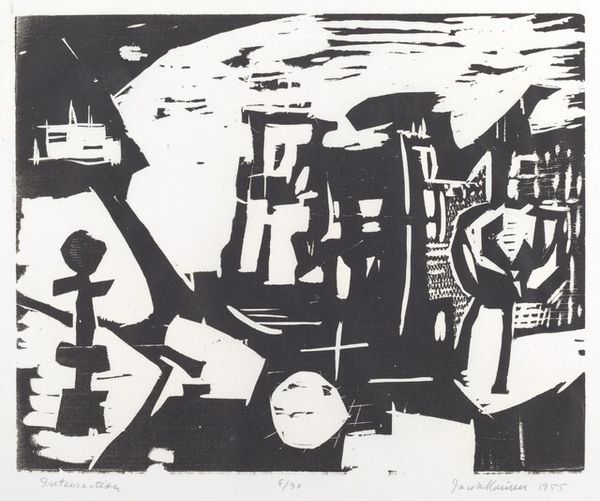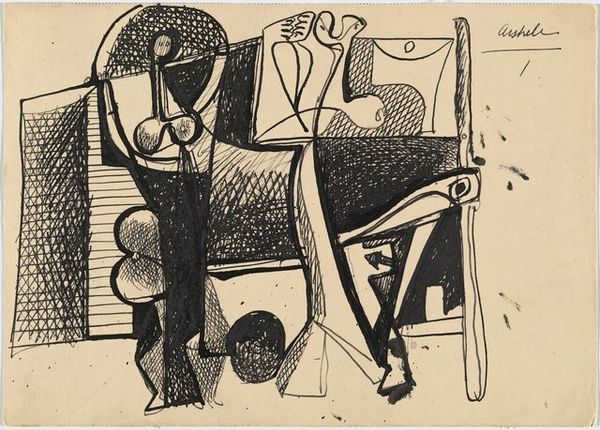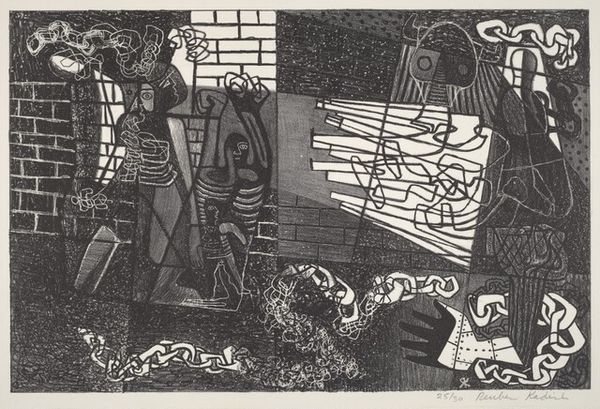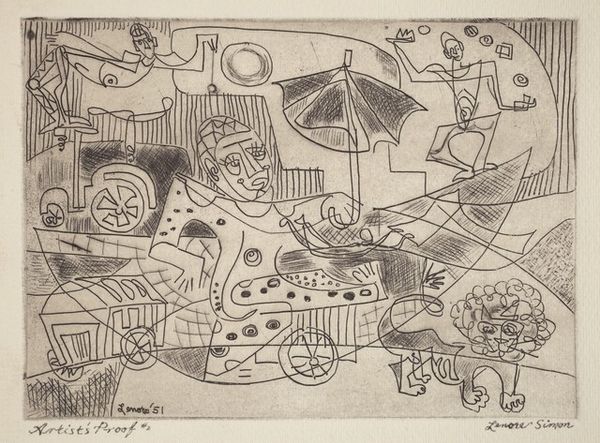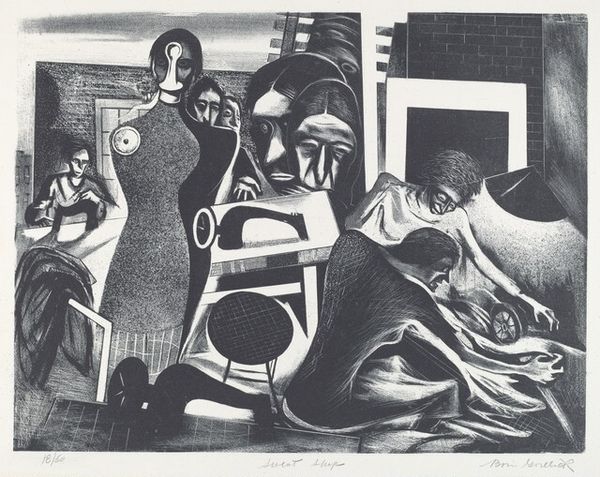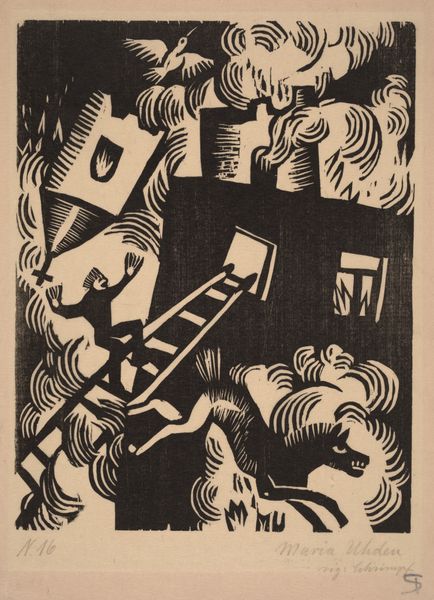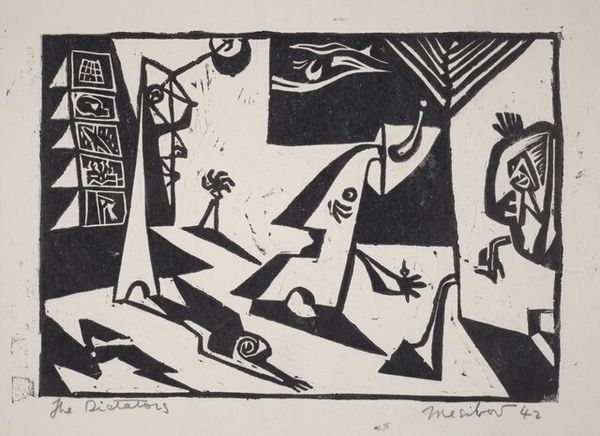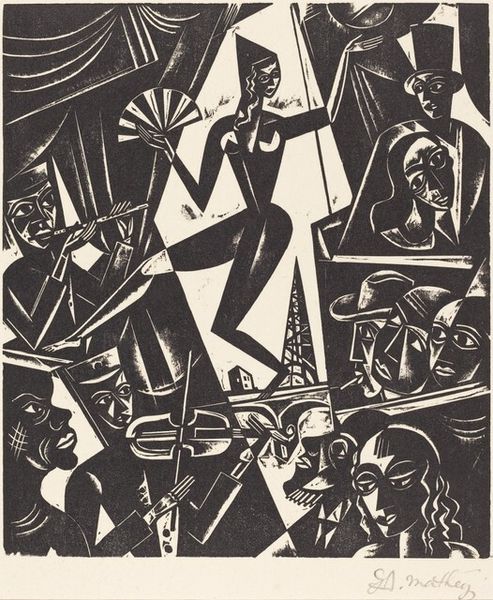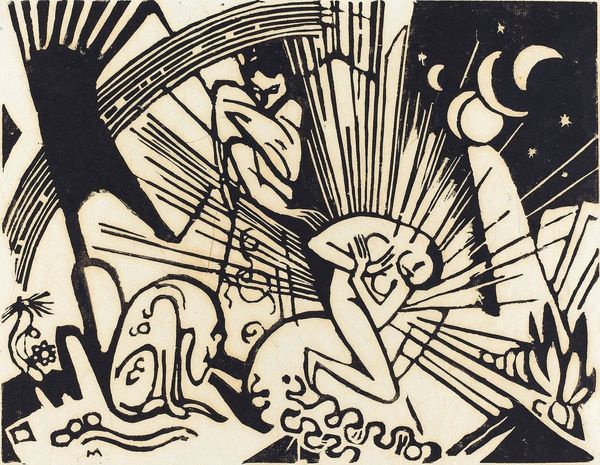
Dimensions: stone: -- x 395 mm image: 149 x 350 mm sheet: 249 x 403 mm
Copyright: National Gallery of Art: CC0 1.0
Curator: Here we have Robert Jackson's "The Camoufleurs," created in 1943. It’s an ink drawing, a print really, displaying a striking, angular quality. Editor: The harsh lines immediately strike me. It’s raw, urgent. There's a definite mood of…constrained anxiety. Curator: Given that it was made during World War II, I would posit that the title itself, "The Camoufleurs," hints at themes of wartime obfuscation, where everything is concealed. Look at how each individual is defined by what appears to be a construction in front and behind. Editor: Semiotically rich. Note how the patterned backgrounds are fragmented—are these physical locations? Mental states? They contribute to the chaotic sense, though I detect that line carries all of the work, offering dynamism, rhythm and even balance in its contrasts. Curator: Precisely. Notice the Black Arts Movement echoes in the stylistic treatment of the figures and in what may be symbols of an external threat in the rear plane, potentially hinting at an urgent appeal toward collective identity as self-protection. In addition, the suggestion that the scene seems like childs-play points to themes of play being destroyed in the context of warfare, thereby destroying youthful optimism. Editor: The composition is deliberate. The artist has arranged these figures—seemingly building models—along a horizontal plane to convey a sense of purpose. The very concept of using creative activity and artistic means to conceal hints at that destruction you mention and how individuals in general come together to solve major impasses using their distinct yet collaborative abilities. Curator: Also consider the implications that even at home, in presumed safety, labor is undertaken for protection, suggesting how war creates a permeating fear within individual homes and creative processes. This is very rich with symbolism. Editor: Indeed. The monochromatic palette reinforces a kind of starkness—the lack of color mirrors the scarcity and seriousness of wartime experience. Curator: Jackson's visual language, full of suggestive shapes and contrasts, speaks to the era’s anxieties—the need to obscure and protect—making “The Camoufleurs” a poignant testament. Editor: For me, it stands as a complex composition exploring that anxious sentiment, employing shape and light in artful measures. It provides the opportunity to consider all sorts of readings from different contexts and with various conceptual frameworks.
Comments
No comments
Be the first to comment and join the conversation on the ultimate creative platform.
